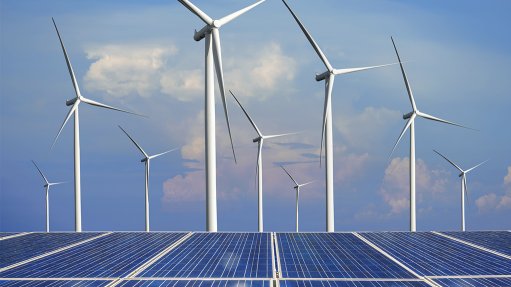
The International Energy Agency (IEA) has revised upwards, by 25%, its forecasts for renewable-energy capacity additions for 2021 and 2022 relative to those published in November, arguing that the platform is now in place for a “new normal” of elevated levels of yearly deployments.
In its ‘Renewable Energy Market Update’, published on May 11, the IEA reports that additions, principally in the form of solar photovoltaic (PV) and wind, surged by more than 45% last year to 280 GW.
The level of deployments represented the largest year-on-year increase since 1999, with the extra power added globally last year equal to the total installed capacity of the ten-country Association of Southeast Asian Nations (ASEAN) region.
Growth was underpinned largely by a policy-related deadline in China, which accounted for 80% of overall growth and half of all installations and was achieved despite pandemic-induced supply disruptions and construction delays.
With subsidies for solar PV and wind phased out at the end of last year, the Chinese market is set to cool, along with Vietnam’s, where a feed-in tariff, which drove record capacity additions of 13 GW in the ASEAN region last year, had also been phased out.
The IEA said the upward revision to its 2021 and 2022 forecasts had been guided by record levels of government auctions for renewables capacity, as well as companies signing record-level power purchase agreements.
“The exceptional level of renewable energy capacity additions is expected to be maintained, with 270 GW becoming operational in 2021 and 280 GW in 2022,” the report states.
“This expansion exceeds the record-level annual capacity additions of 2017 to 2019 by over 50%, such that renewables are expected to account for 90% of total global power capacity increases in both 2021 and 2022.”
Despite a softer prognosis for the massive Chinese market, the outlook has been buoyed by developments is several other territories, which will help offset weakened Chinese demand.
Additions in Europe are forecast to increase to 44 GW in 2021 and 49 GW in 2022 and the extension of the US tax credit has improved prospects for onshore wind, without factoring in any possible renewables tailwind from policies currently under consideration.
The outlook for several other regions and countries was equally positive, including India. However, the IEA acknowledged that the recent surge in Covid-19 cases in India had created short-term forecast uncertainty.
Solar PV development is expected to continue to break records, notwithstanding recent supply-chain constraints, including fires at two PV-grade silicon manufacturing plants in the Xinjiang province in July 2020, and rising input and commodity prices.
Yearly additions are forecast to reach 162 GW by 2022, or almost 50% higher than the pre-pandemic level of 2019. In 2020, there was a 23% rise in new solar PV installations to almost 135 GW.
The pace of global wind capacity additions, which increased by more than 90% last year to
114 GW, is set to taper in 2021 and 2022, but remain at a level that is 50% higher than the 2017 to 2019 average.
The IEA said that, shifting power generation to renewable sources was a key pillar of global efforts to reach carbon neutrality, but warned that carbon dioxide emissions were set to rise this year, owing to a parallel rise in coal use.